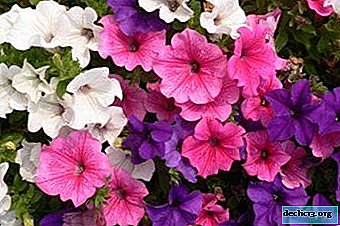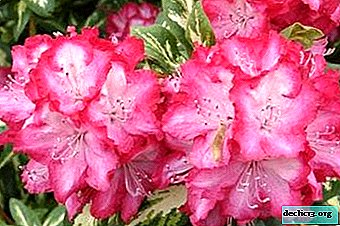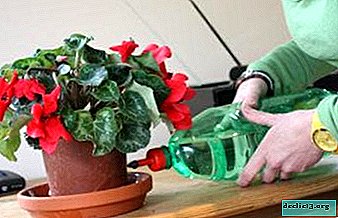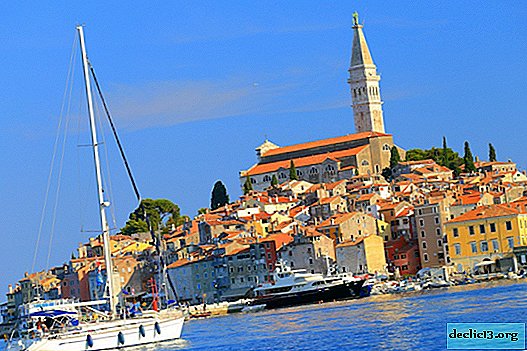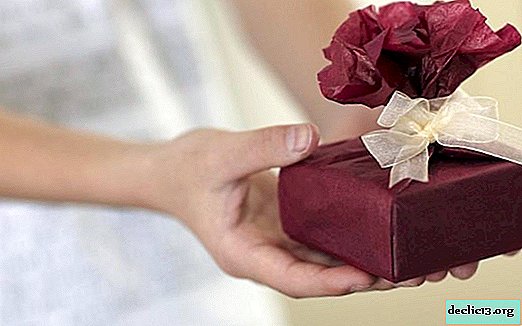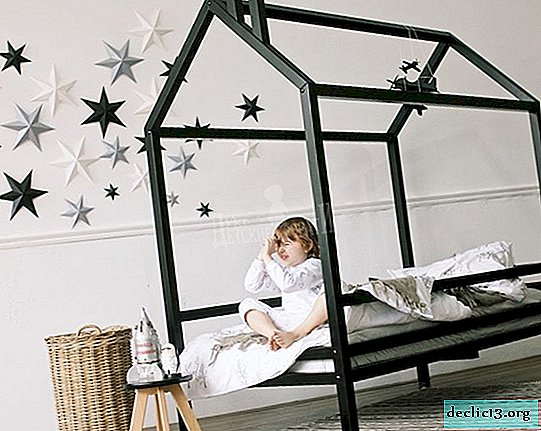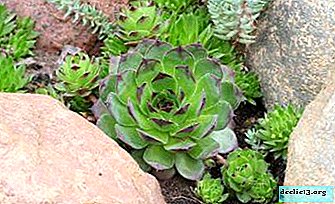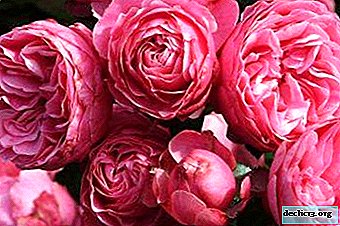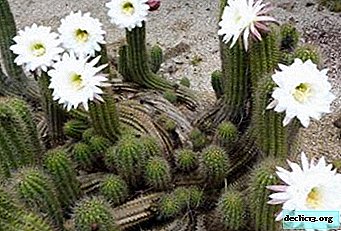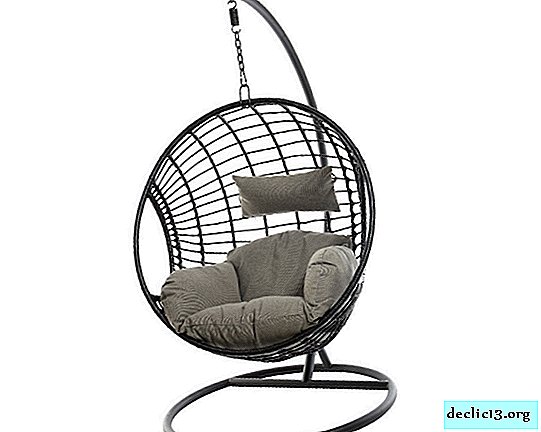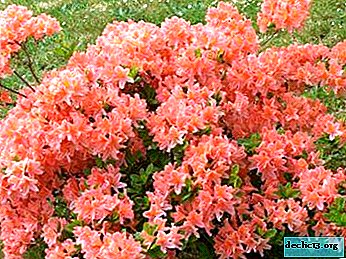What kind of plant is jasmine gardenia? Features of growing at home

Gardenia is an amazing plant that hardly leaves anyone indifferent. Many flower lovers think about buying this tropical species, but it stops the wayward character. Gardenia is considered a fairly demanding houseplant. However, the capricious beauty can be tamed, knowing some of the nuances of her cultivation. In the article we will tell what kind of houseplant it is - jasmine or jasmine gardenia, show its photo and describe the features of reproduction and care for this flower at home.
Characteristic
Jasmine gardenia (Gardenia jasminoides) is a representative of the large Marenova family. This species is suitable for breeding at home. A bush grows in nature on the African continent, in Asia:
- China.
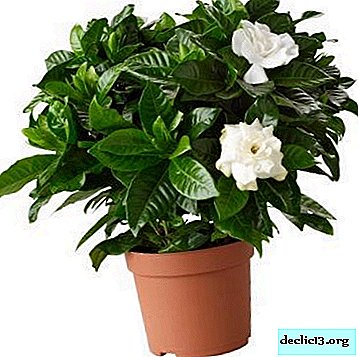 Taiwan.
Taiwan.- Japan.
- Ryukyu Islands.
- India.
It grows where it is warm and humid, and still prefers partial shade, acidic, well-drained soil. In the wild, grows from 1.5-3 meters tall. On the windowsill it becomes no more than half a meter. The leaves are large, smooth, bright green in color and have a glossy sheen.
The flower shrub is distinguished by decorative leaves; all year round it is green and lush. The size of the leaves is 10 cm in length. Flowers are single or collected in inflorescences of 4-6 pieces. Mostly white, but there are yellow, pink, vanilla tones.
The appearance of the inflorescence in shape resembles a peony or a blossoming rose. Petals are smooth, but there are varieties that have a terry or semi-double texture. The size of the flowers is 6-8 cm in diameter.
Gardenia was brought to Old Europe in the 18th century. Since then, florists do not let the tropical beauty out of sight. In warm countries, it is decorated with parks, squares, flower beds, and in our latitudes gardenia is grown on window sills or in greenhouses.No less keen on an unusual plant are breeders, through the efforts of which various varieties have been bred. Among the most popular types of gardenia are:
- Chuck Hayes
- Beauty.
- Amy.
- Belmon.
- Mysteries.
- Radikans.
- Variegata.
- Radikan Variegata.
- Golden Magic.
Watch a video about jasmine gardening:
Photo
See what a jasmine gardenia indoor plant looks like:




Landing
As already mentioned, the plant loves acidic soil, pH 4.5-5.5. However, over time, water leaches acidic substances and the earth becomes alkaline. Therefore, it is important to acidify water for irrigation a couple of times a month by adding citric acid, juice or standing on peat. The earth should be light, loose and fertile.
The flower grows well in moist soil, so an important feature is the ability of the soil to retain water.The moisture capacity and nutrition of the root system depends on the composition of the soil.
For self-preparation of the substrate, such components are required:
- deciduous land;
- soddy soil;
- coniferous land;
- peat;
- coarse sand.
Natural baking powder will not be superfluous, mainly perlite or vermiculite is used. These substances can replace sand. The total component of additives should be no more than a third of the total mass of the earthen mixture. Do not also forget about drainage, the best option would be - expanded clay, previously boiledto remove salt from the pores.
All details on how to choose soil, pot and fertilizers for gardenia, read here.
Home Care
The plant is quite demanding on home growing conditions. At the slightest change in the parameters of the content, it reacts sharply.
How to care after purchase?
 The newly acquired gardenia should not be disturbed. She needs time to recover from the stress associated with transportation, a change of location.
The newly acquired gardenia should not be disturbed. She needs time to recover from the stress associated with transportation, a change of location.
Do not be alarmed if Gardenia drops buds upon arrival home. Thus, she reacts to a change of residence, moving.
The adaptation period usually lasts 2-3 weeks, no more. At the end of this period or after flowering, an exotic beauty should be transplanted. The procedure is necessary, because the soil in which it was sold is poor and does not have useful substances. You will learn more about the nuances of gardenia transplantation in this article.
Fertilizers
Indoor gardenia needs to be fed in the autumn-spring period. In early spring, active growth begins, the flower needs additional fertilizing, and in the autumn-winter period fertilizers can not be used.
It is necessary to feed a flower 2 times a month. The concentration should be made twice as weak as indicated in the instructions, in order not to overfeed the plant. Gardenia responds well to organic and mineral fertilizers. use complex preparations of liquid consistency for azaleas or for flowering plants.
It is also good to carry out foliar nutrition, by means of spraying with green fertilizers with mineral fertilizers. This procedure will be enough one per week.
It is important that the mineral calcium is not included in this composition. Indoor beauty reacts quite sharply to the presence of this substance, slows down growth, does not bloom.Watch a video about home care for jasmine gardenia:
Pruning
A striking, compact form is achieved by cropping. This process also stimulates the growth and long flowering of the plant. The formation of the crown is carried out after the flowering stage, namely in the fall. First of all, sick, damaged, underdeveloped processes are removed, which will add to the flower of strength.
During the growing season, pinch the lateral processes, thus, the bush looks more luxuriant and neat. After plucking the gardenia will bloom more densely, and so that healthy cuttings do not disappear, they can be used as planting material.
When and how does it bloom?
 The flowering phase occurs in March and lasts until September. First, gardenia is preparing for the process, somewhere in April-March, bud buds appear. It is during this period that the flower requires careful care. It is forbidden to transplant gardenia. It is impossible even to mix or move it, and touch the flowers with your hands. Even the slightest flaw can lead to the dumping of buds.
The flowering phase occurs in March and lasts until September. First, gardenia is preparing for the process, somewhere in April-March, bud buds appear. It is during this period that the flower requires careful care. It is forbidden to transplant gardenia. It is impossible even to mix or move it, and touch the flowers with your hands. Even the slightest flaw can lead to the dumping of buds.
I would also like to note that the flowers do not bloom all at once, but in turn. Therefore, on a green shrub there are several snow-white buds that ripen for 2 months. BUT blooming flower is kept on gardenia for about 4 days. Faded inflorescences must be immediately cut off to form new ones. You will learn about why gardenia does not bloom and what care should be taken to form buds, in this material.
How to transplant?
Before transplanting, you must first purchase or prepare yourself a high-quality substrate, as well as pick up a high-quality pot. This process should be performed every 3 years, as the root system grows, if necessary.
The process of soil renewal is usually performed in early spring, always after flowering. Jasmine gardenia, like most plants, does not tolerate a transplant. For easier adaptation and quick recovery, it is better to use the transshipment method:
- water the soil abundantly and take out the plant along with a lump of earth from the pot;
- put a thick layer of drainage on the bottom of the new pot;
- put gardenia with earth in a pot and sprinkle with a soil mixture.
Life expectancy when growing at home
In the natural range, wild gardenia can last 15-20 years. Of course, in a house or apartment, this period is significantly reduced. Under favorable conditions and attention, an exotic beauty can live up to 10 years. If the parameters of the room or the care does not fit the capricious flower, then the duration will be less than 1 year.
Mostly young individuals bloom better, therefore it is advised not to keep them for more than 4 years, but it is better to grow several young plants at once.
Breeding
Jasmine gardenias are bred in 2 main ways:
- vegetative;
- seed.
Cuttings
 How to propagate a plant by cuttings? To do this, in the early spring after the circumcision procedure, proceed as follows:
How to propagate a plant by cuttings? To do this, in the early spring after the circumcision procedure, proceed as follows:
- Healthy, strong processes 10 cm long are left. The leaves are removed, leaving on top 2-3 pieces.
- The slice is treated with Kornevin powder.
- Then they are placed in a peat-sand mixture and covered with transparent polyethylene, creating a greenhouse effect. Root formation will accelerate lower heating.
- Cuttings are regularly sprayed and watered with water, not forgetting to air the greenhouse.
- After 1 month, the seedlings take root, they should be transplanted into a new pot with high-quality soil.
Seeds
Propagated by seeds in late February - early March. Use purchased seed or self-harvested.
The main condition is the freshness of the seeds.- Before sowing, the seeds are soaked in water for 24 hours.
- Then, seeds are carefully planted in the prepared, room temperature soil.
- Top soil is sprayed with water from a spray bottle.
- Place the landing container in a mini greenhouse with a temperature of at least + 25 ° C.
- In a month you will see the first seedlings. A plant grown from seeds will bloom after two years.
Watch a video on how jasmine gardenia propagates:
Causes of diseases and methods of treatment
Why experienced flower growers strongly recommend that you follow the recommendations for gardenia care, but because not maintaining the necessary parameters certainly affects the plant’s health.
- Why do leaves turn yellow? This can be caused by damage to the root system, as a result of an improperly selected irrigation system. Both excessive moisture and lack of moisture negatively affect the roots, and as a result, the appearance of yellow, sometimes with brown spots of leaves. It is also possible this is evidence of low temperature in the room, improper soil composition.
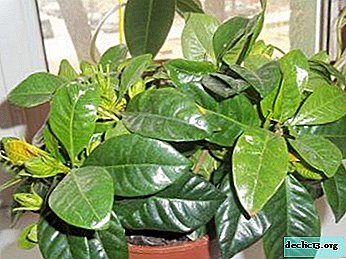 Why doesn’t bloom? Falling buds indicates strong fluctuations in temperature, excess or lack of moisture, drafts, movement of the pot, low humidity. During the budding period, gardenia is sensitive to all environmental changes, so adjust the watering, increase the humidity and eliminate drafts, in order to avoid rejection of flowering.
Why doesn’t bloom? Falling buds indicates strong fluctuations in temperature, excess or lack of moisture, drafts, movement of the pot, low humidity. During the budding period, gardenia is sensitive to all environmental changes, so adjust the watering, increase the humidity and eliminate drafts, in order to avoid rejection of flowering.- White spots on the leaves indicate the development of the disease chlorosis, which is associated with a lack of iron. How to save a plant? Feed it with iron-containing preparations, for example, Ferovit. Procedures are carried out until the flower recovers completely, and later for prevention.
- Leaves turn black and fall off. First of all, the lower leaves are damaged, which means there is a problem with the roots, a bay or a lack of nutrients. Perhaps the soil has compacted, there is no air access, it is also worth paying attention to the drainage holes, if they become clogged, clean them. When the crown turned black - you need to look for insect pests.
- Dry foliage - a sign of improper transplantation, irrigation regimen, lack of sun or food. To get rid of such troubles, you need to: set up a humidification system, feed the flower and rearrange it in a place with good lighting.
About all the problems with gardenia leaves, we wrote in detail in this article.
Pests
Gardenia is often attacked by scale insects, spider mites, and aphids. With these parasites, the fight is with the help of insecticide preparations:
- "Bicol."
- "Akarin."
- "Demitan."
The number of treatments depends on the degree of damage to gardenia. Basically, 3 procedures should be performed with a break of 10-14 days.
Preventive measures: weekly inspection of the foliage, wiping it with soap and water, maintaining the normal temperature and humidity conditions.You will learn more about the diseases and pests of this plant in another article.
Conclusion
As you can see, competent care for jasmine gardenia at home requires enough attention, patience, as well as zeal and endurance. But all these efforts will not be in vain; in return, the exotic beauty will thank you with an incredible bouquet with a light floral aroma.

 Taiwan.
Taiwan. Why doesn’t bloom? Falling buds indicates strong fluctuations in temperature, excess or lack of moisture, drafts, movement of the pot, low humidity. During the budding period, gardenia is sensitive to all environmental changes, so adjust the watering, increase the humidity and eliminate drafts, in order to avoid rejection of flowering.
Why doesn’t bloom? Falling buds indicates strong fluctuations in temperature, excess or lack of moisture, drafts, movement of the pot, low humidity. During the budding period, gardenia is sensitive to all environmental changes, so adjust the watering, increase the humidity and eliminate drafts, in order to avoid rejection of flowering.